Note: This is the first installment in a seven-part series Brian Doyle prepared to help colleagues make the most of an emergency medicine rotation Down Under.
Part I:
There are many potential differences US trained Emergency Physicians encounter when adjusting to the Australian Emergency Department. The following are my biased observations… People may disagree with what I have written. I hope you find this helpful.
Since this paper is meant for orientation purposes, I have obviously emphasized the differences. Don’t be intimidated by what I have included below! The human bodies are still the same, and there are far more similarities than differences! No one is expecting anybody to jump right in and be very efficient, and when in doubt, you can always ask questions!
Friendly and Less Formal
One thing that you will immediately notice is that the Australian culture seems to be a lot less formal and friendlier. You will be known by your first name from all of the nurses and even the patients. Don’t ever try to call yourself, “Dr. XYZ.” Many Australians will probably forgive you thinking that there is a cultural difference, whereas others might think you are pompous, arrogant, or pretentious. These character traits are really looked down upon by most Australians. (Most Australian “heroes” are humble in nature.) I always introduce myself and “Hi… I’m Brian Doyle… one of the doctors.” They usually refer back to me as “Brian.” Of course, the above observations are generalizations and you will see local variations and exceptions. Likewise, it is customary to refer to patients by their first name, but I still refer to older patients as Mr. or Mrs. XYZ.
There is not much of the social hierarchy between doctors and nurses that exists in some areas of the USA. Nurses will banter back with the doctors as though they are your colleagues and refer to you by your first name. This is not to say that there is not mutual respect or that they don’t do their job. You can ask them to do things and follow orders just as you would in the USA. Overall, the nurses I have worked with have been fantastic!
Dress is also less formal. The typical ED dress is “smart casual.” Nice button-down shirt and slacks. It is unusual to see an ED doc wear a tie, but I have on occasion. On weekends, it is not unusual to see the registrars or junior staff in blue jeans. I have even seen some of the nurses and doctors wear shorts. I have NEVER seen an ED doctor wear a white coat. I wore my white coat my first day working in Australia until a nurse came up to me and said “I would take that off mate… the patients might mistake you for a butcher!” Scrubs became mandatory at some hospitals during the SARS epidemic and so have remained. I personally don’t have a problem with anyone wearing their own scrubs in the ED (I prefer them myself when in the USA) but you will need to ask what the local preference is.

